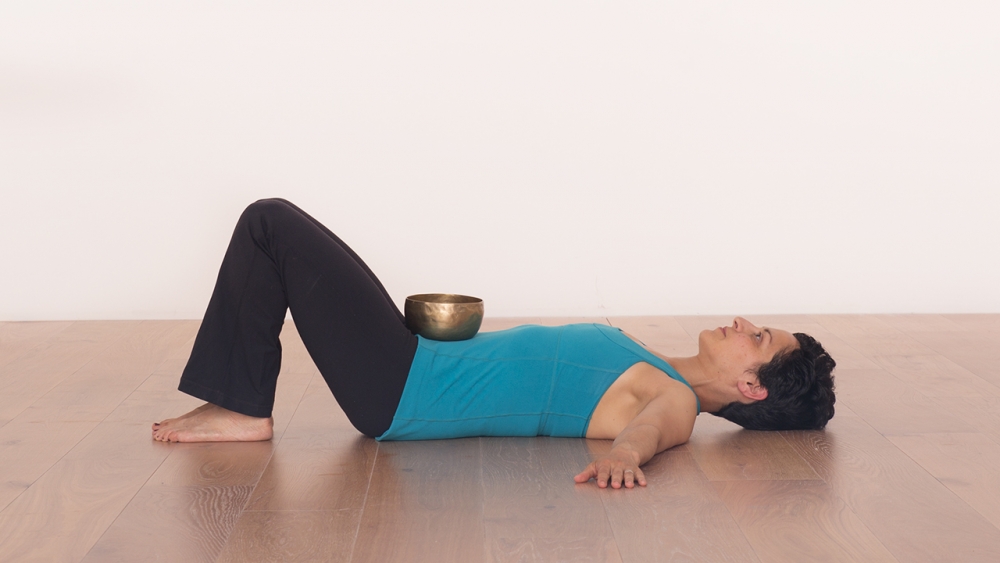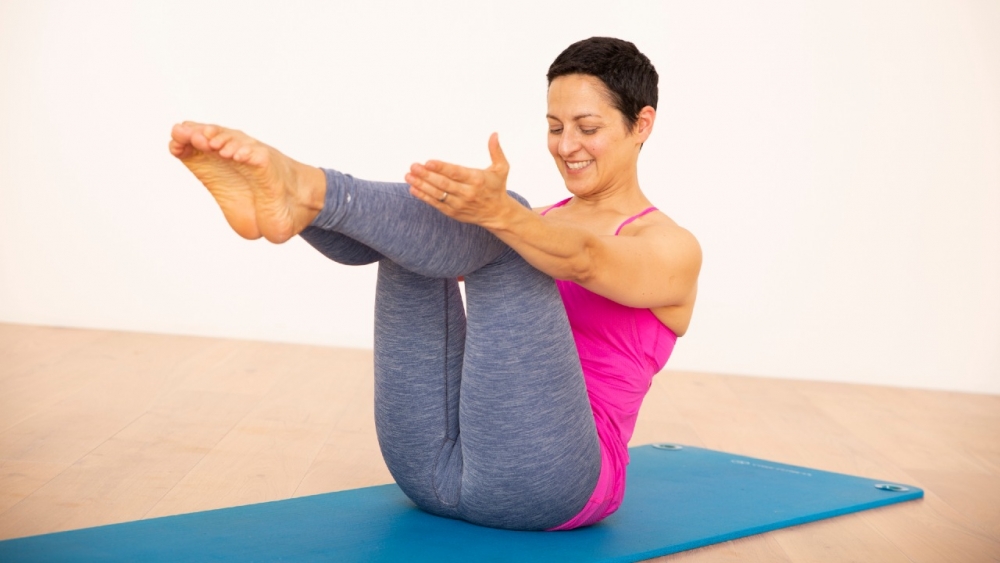Any movement lover, whether it be yoga, Pilates or dance, seeks to increase their potential for movement and create space in the body. We enhance this potential and make space as the body becomes more organised. Since the position of the pelvis is a major factor in determining how the rest of the body is aligned, if we understand where the pelvis is and how it affects our movement we will find more freedom, strength and power.
I’d like to share how a neutral pelvis provides a freer breath, more access to and power from the core muscles and the safest position for the spine. Simply put: spending more time in a neutral pelvis will help us uncover our movement potential.
A neutral pelvis provides a freer breath, more power from the core muscles and the safest position for the spine. Simply put: spending more time in a neutral pelvis helps us uncover our movement potential.
Exploring the position of the pelvis
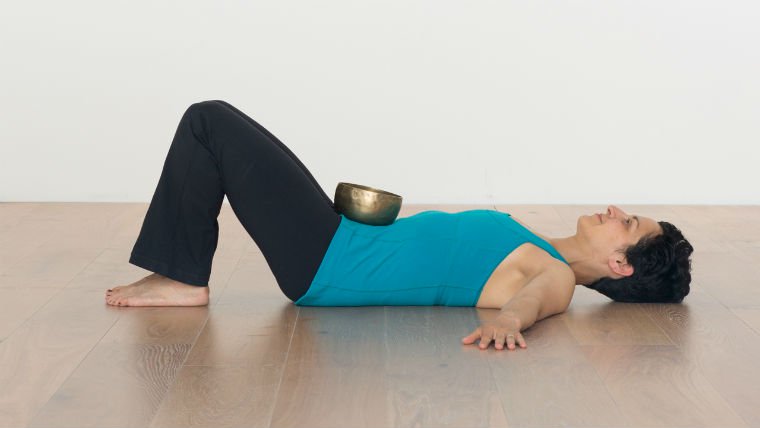
Becoming aware of where the pelvis is positioned takes time and exploration. If we are too impatient to get moving or are too interested in learning a holding pattern of ‘good posture’ we are setting ourselves up for injury and/or frustration. So let’s start exploring. You probably heard or tried the exercise where you imagine a bowl of water on your pelvis and tipping the water towards you and away from you. If you tilt your pubic bone forwards (Posterior pelvic tilt – image 1) your spine will react: your lower back will move closer to the floor reducing the arch in your back. If you tilt your pubic bone backwards (Anterior pelvic tilt – image 2) your lower back moves away from the floor, increasing the arch. The spine cannot help but react when the pelvis moves and this is a very good thing. If you continue tilting the pelvis forward and back you will pass through neutral – the sweet spot where the natural curve of the lower back is preserved.
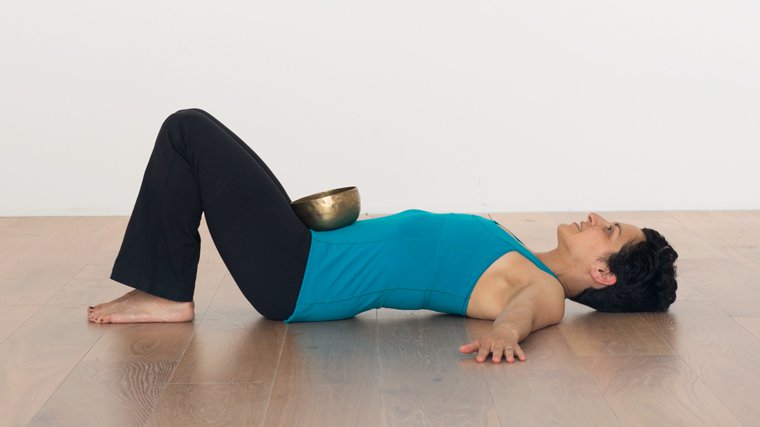
It is very important to say ‘natural curve’ because some of us have more pronounced curves in the spine and some of us have less. This is why it is essential to organise the body not from the shape of the spine, but from the position of the pelvis. What is neutral for one person can look completely different to the body next to you.
Defining a neutral pelvis
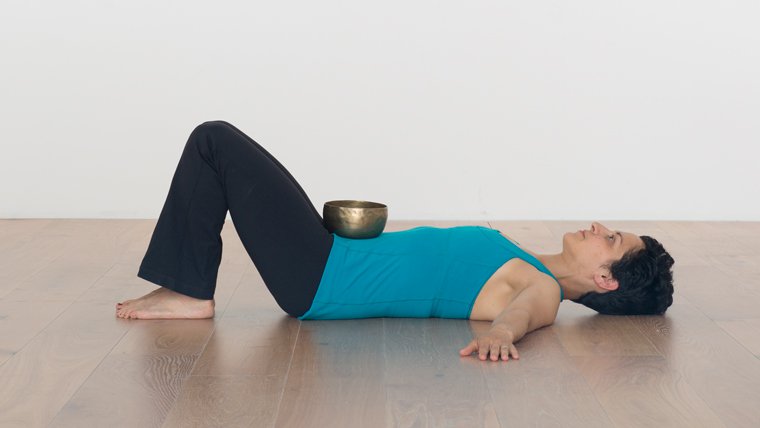
Neutral pelvis (image 3) is the position of the pelvis in which the hip points (anterior superior iliac spine) and pubic bone are in the same plane (vertical in standing, horizontal when lying down) and the right and left hip points are in the same plane.
You want to think of your hip points and pelvis being in line as your base. This is where you want to try to spend most of your time. Sitting. Standing. Lying down. It’s a wonderful way to bring awareness to the body and ground yourself throughout the day. It’s also a simple way to bring mindfulness to your movement practice.
3 movement explorations
Lie on your back with your knees bent – like in the images. The try each of the following actions three ways: with a neutral pelvis, a posterior pelvic tilt and an anterior pelvic tilt.
1. Inhale deeply. How easy is it to breathe down into the body? To feel the inhalation in the belly and in the sides and backs of the ribs?
2. Take a strong exhale through the mouth. Does it feel difficult to access the transverse abdominus – the deepest of our abdominal layers? Can you feel the sensation of flattening or widening of the low belly?
3. Try to contract the pelvic floor. In which position can you find the most even engagement?
My expectation is that for each of these three actions, you will find that neutral pelvis is a better option. You can also try the experiment standing or sitting or on hands and knees.
This is just the beginning. Can you also move your legs and maintain neutral pelvis like in toe taps or leg stretches? If you are leaving neutral is it a conscious choice? What about when you jog or swim? What is the relationship between the pelvis and the rib cage?
Starting to ask questions like these are just the tip of the iceberg to an avalanche of discoveries.
Benefits of a neutral pelvis
If the pelvis is in neutral, the body’s systems are more organised. The vertebrae in the lower back are not being compressed forwards or backwards. If you think about how you are sitting right now, you are likely in a posterior tilt. Can you organize yourself into neutral? This way, the muscles of the low back are in a position where they can literally protect the spine better. The diaphragm – one of the most overlooked and underrated core muscles – can function better. Plus, we have a better chance of aligning the neck and shoulders if the pelvis is neutral. The body’s potential for movement is enhanced in this position; we have more power.
Neutral spine in Pilates
Classical Pilates is sometimes taught with an ‘imprinted spine’ or posterior tilt or scoop. This was my first introduction to Pilates. I was very sceptical when a teacher later told me about neutral pelvis. It was uncomfortable. The deep muscles of the low back – the lumbar multifidus – complained. And after a month of fighting this change, suddenly I got it. I was freer. I could access my abdominals more. I felt longer. I felt stronger. If the goal is to create more space in the body, to increase our movement potential, we have to know where our pelvis is.
I often hear from clients that neutral pelvis feels vulnerable for the low back and is uncomfortable. And I can empathise completely with these concerns. No one wants low back pain and there are indeed times when a slight posterior tilt is necessary. I feel confident that this relationship between the position of the pelvis and the shape of the lumbar spine is an integral element in solving low back pain.
These deep postural muscles – here we are with the lumbar multifidus again – have sometimes been lost and forgotten and it can indeed be uncomfortable and exhausting to get them firing properly again. But as long as there is no increased pain the day after a workout, you can be certain that the sensation you felt during the workout was a positive sign.
Stabilising the pelvis
One more exercise to try – the inner thigh squeeze. Lie down on the back with the knees bent and the feet flat on the floor. The arms can rest wherever they are comfortable. Place a ball or thick, folded blanket between the legs and exhale to squeeze the inner thighs and inhale to relax. Here we can begin to learn how to stabilise the pelvis. So as you squeeze the inner thighs, do not allow the pelvis to rock forwards or backwards. If you’re not sure, ask a friend to watch you or place your hands on the pelvis to check that it is stable. This may seem like a simple exercise but it can be a huge moment of enlightenment for the body.
Checking in on where the pelvis is and how it relates to the spine is a wonderful way to stay connected to the body throughout the day. I’m convinced that increased awareness of our pelvis can reduce pain in the long run and make us better movers, stronger humans, and even more joyful beings.
So, where is your pelvis right now?
Learn Pilates on EkhartYoga
About the author:
Rebecca Rainey is a passionate movement enthusiast providing meaningful and effective tools for healthy, strong, and blissful bodies. She currently offers her Pilates-based classes in Berlin, Germany and online. Learn more about Rebecca at rebeccarainey.com

